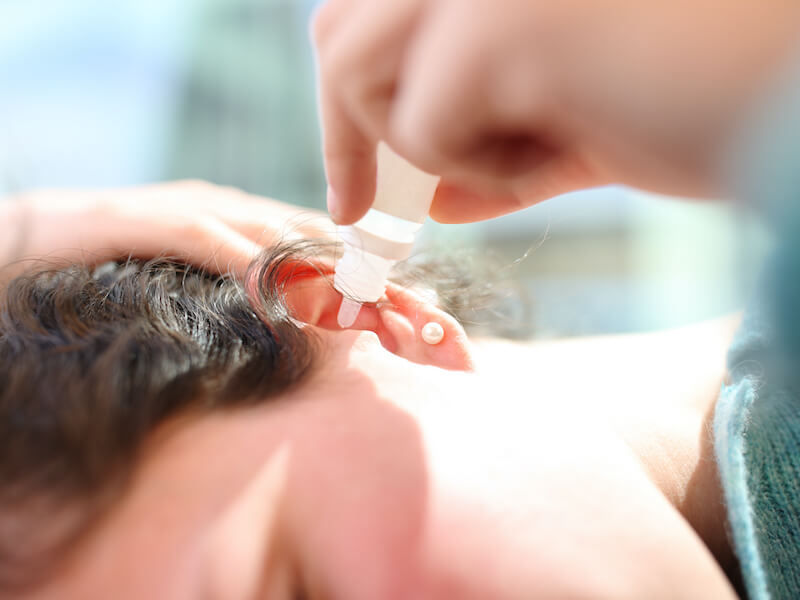
When you take a shower, always remember to wash your ears. Whenever you say that, you unavoidably use your “parent voice”. Maybe you even recall getting that advice as a kid. That’s the kind of memory that can take you back to simpler times as you wrap yourself in the nostalgia of youth.
But it’s also great advice. Out-of-control earwax accumulation can cause a substantial number of problems, especially for your hearing. And additionally, earwax can solidify inside your ear and become really hard to clean. In other words, the cleaner you keep your ears, the better off you’ll be.
Excessive earwax? Eww!
We get it, earwax is not the most appealing of substances. That’s a viewpoint that most individuals share. But earwax does have a purpose. Created by special glands in your ear and churned outwards by the chewing motions of your jaw, earwax can help keep dirt and dust out of your ears.
In other words, the correct amount of earwax can help keep your ears healthy and clean. However counterintuitive it sounds, the reality is that earwax itself is not a sign of bad hygiene.
An excessive amount of earwax is where the trouble begins. And, understandably, it can sometimes be a little bit challenging to tell when a healthy quantity of earwax starts to outweigh its advantages (literally).
What does accumulated earwax do?
So, what kind of impact does excess earwax have? Earwax that gets out of control and, over time, builds up, can lead to several problems. Those issues include:
- Earache: An earache is one of the most prevalent symptoms of excess earwax. Sometimes, it doesn’t hurt that bad, and other times it can really hurt. This is typically a result of the earwax creating pressure somewhere it shouldn’t.
- Dizziness: Your inner ear is essential to your balance. So when excess ear wax causes your inner ear to have issues, your balance can suffer, causing dizziness.
- Tinnitus: Tinnitus is a condition where you hear a phantom ringing or buzzing in your ears. Tinnitus symptoms can show up or get worse when earwax accumulates inside your ear.
- Infection: Infections can be the outcome of excessive earwax. In some cases, that’s because the earwax can lock in fluid where it ought not to be.
This list is just the beginning. Headaches and discomfort can happen because of uncontrolled earwax accumulation. If you use hearing aids, excess earwax can interfere with them. This means that you might think your hearing aids are having problems when the real issue is a bit too much earwax.
Can your hearing be impacted by earwax?
Well, yes it can. Hearing loss is one of the most common issues connected to excess earwax. When earwax accumulates in the ear canal it causes a blockage of sound causing a form of hearing loss known as conductive hearing loss. Your hearing will typically go back to normal after the wax is cleaned out.
But if the accumulation becomes extreme, long term damage can develop. And tinnitus is also typically temporary but when earwax blockage lingers, long-term damage can cause tinnitus to become an enduring condition.
Prevention, treatment, or both?
It’s a good idea to keep track of your earwax if you want to protect your hearing. It’s improper cleaning, not excess production that causes buildup in most instances (for example, blockage is frequently caused by cotton swabs, which will push the earwax further in rather than getting rid of it).
Often, the wax has become hardened, thick, and unable to clear without professional treatment. The sooner you receive that help, the sooner you’ll be able to hear again (and the sooner you’ll be able to start cleaning your ears the right way).
References
https://my.clevelandclinic.org/health/diseases/14428-ear-wax-buildup–blockage